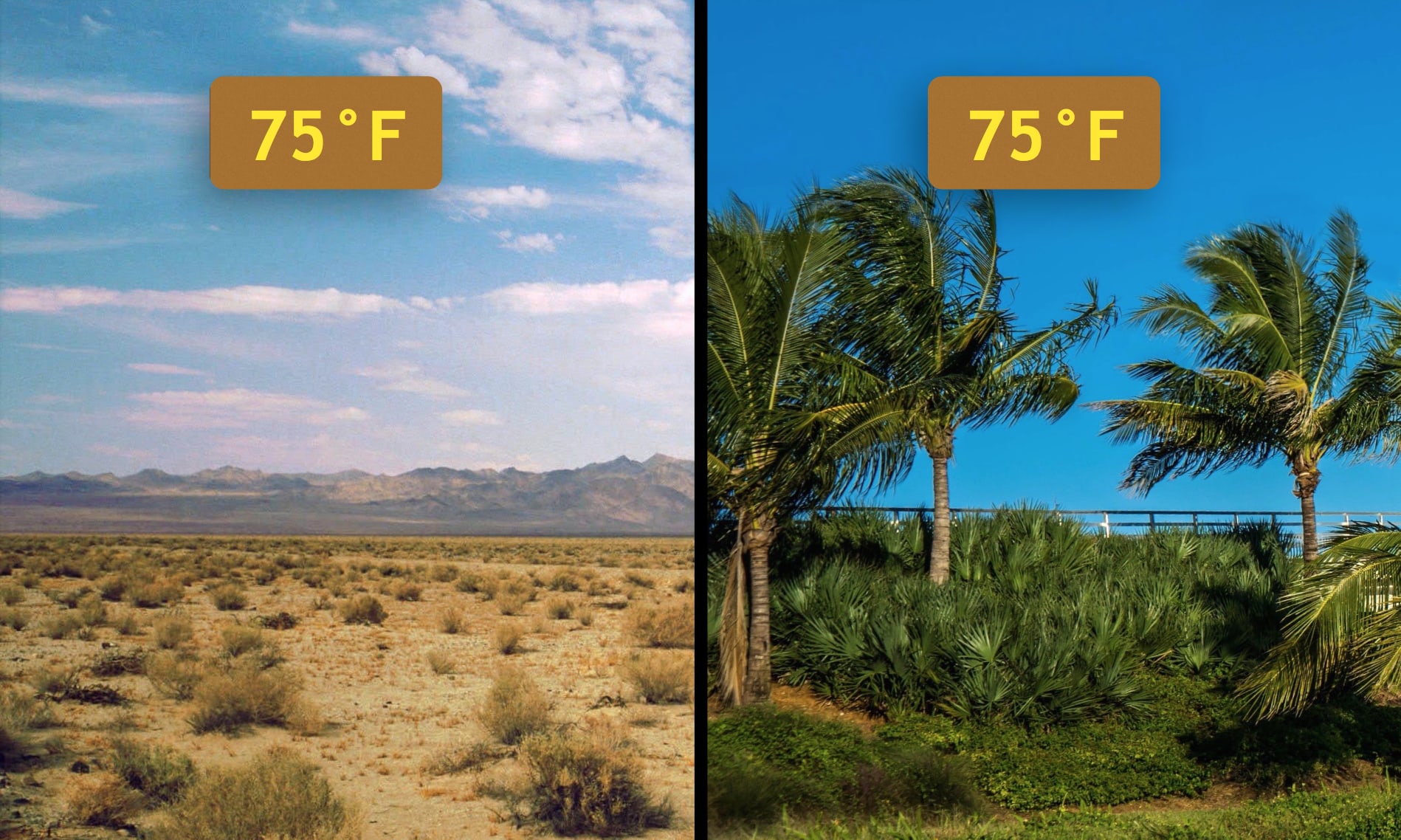
Discuss:
What’s the climate like where you live: is it more like where Doug grew up? Or more like where Shelley grew up? Or something else?
The next slide features our revised version of the Climate Decoder, which has been improved. Click on the arrow to the right to proceed.
But if you need to, you can still access the previous version of the activity.




















Discuss:
What kind of weather, plants, and animals do you think the orange and purple zones have? Why do you think that?

Discuss: These two places have the same temperatures throughout the year... so why do they look so different?
Do you have any ideas?


Discuss:
(1) Which climate zones have you been to?
(2) Which ones would you want to visit?
Below are ideas for extending this topic beyond the activity & exploration which you just completed.
- Lesson Assessment and Answer Key
- Readings: Three readings with comprehension questions.
- Activity: Create a travel poster for your favorite climate.
- Activity: Add the desert climate to the climate map you made.
These readings are free with registration on ReadWorks, a nonprofit committed to providing teachers with research-proven, Common-Core-aligned readings. All readings include comprehension questions.
- Animals Get Ready describes how animals prepare for winter in temperate climates. (Grade 3)
- Ilse and the International Camp is a story about students at an international camp talking about the weather where they live. (Grade 2)
- An introduction to climates introduces students to climates, reinforcing and adding to the lesson. (Grade 4)
Have each student choose and research a climate zone — then draw a travel poster for that climate.
Encourage students to think about what makes each climate special. What plants and animals live there? What sorts of houses do people build there? What clothes would you need to pack? What time of year would you choose to go?
This is an opportunity for creative writing and thinking.







